Can You Burn Green Wood? Is it Good Firewood?
-

- Last updated:
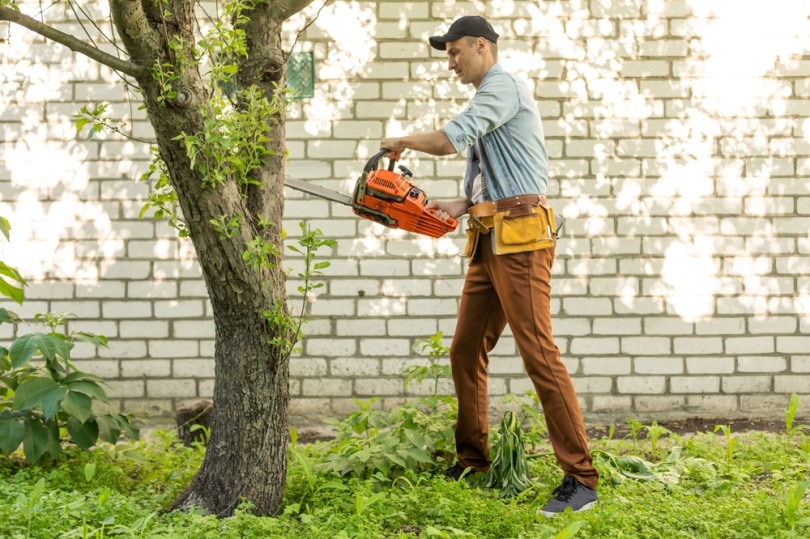
Green wood is essentially freshly cut or wood that has not been seasoned. You may have just cut down a tree in your yard or had one fall or break, and perhaps you are wondering if you can use it in your fireplace or for your backyard bonfire on the weekend.
While pretty much anything can burn, the question you should ask is, should you burn it? Drying wood is very important, not just for burning but also for building. Because green wood has not been seasoned, it contains 100% moisture and can be very difficult to ignite. It will produce a lot more smoke and water bubbles. It should not be used for firewood, especially for wood stoves or fireplaces.
How to Identify Greenwood
If you are unsure if the wood you have available to burn is green wood, this is how you can identify it:
- The bark will still be firmly attached.
- It will feel heavy.
- It will look fresher than dry wood.
- The cut end will still feel damp and will be lighter in color.
Dry wood will feel lighter; the outside of the wood will be dark, and the bark will be cracked or peeling.
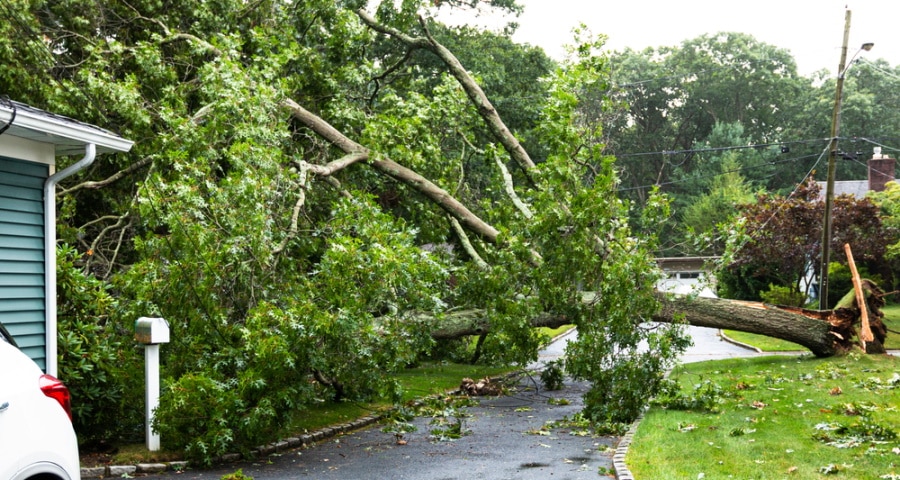
Green Wood Vs Dry Wood
Green wood has not been dried and was alive when it was cut. You may have green wood from pruning, cutting a tree, or a fallen tree, and the wood has not been seasoned yet. It is still high in moisture, which makes it a lot heavier, so it burns less efficiently and is difficult to light. It also produces a lot of smoke when it burns.
Dry wood is the ideal wood for burning. It contains no moisture and is much lighter. Freshly cut branches from a dead tree can also be considered dry wood.
Is Greenwood Good Firewood?
No, greenwood is not good firewood due to its high water content. Besides the fact that it doesn’t burn well, it can create some potential hazards. The smoke created from green wood does not draft well and can sometimes roll into your living room instead of traveling up the chimney.
A fire requires air to combust, and water vapor replaces the clean air required for a fire to burn. This results in thick, heavy smoke, and because the smoke isn’t as hot as it should be and is heavier due to the water content, it spends more time in the chimney. The more time the smoke sits in the chimney, the faster and more likely creosote will build up.
Creosote build-up is the leading cause of chimney fires, which is extremely dangerous and destroys thousands of homes every year. Furthermore, when creosote accumulates in the chimney, it narrows the flu and causes turbulence by creating an uneven surface, which makes it more difficult for smoke to flow upward out of the chimney.
Water reacts with creosote to produce acids such as sulfuric and hydrochloric acids. These acids are toxic, and they can also corrode your chimney.
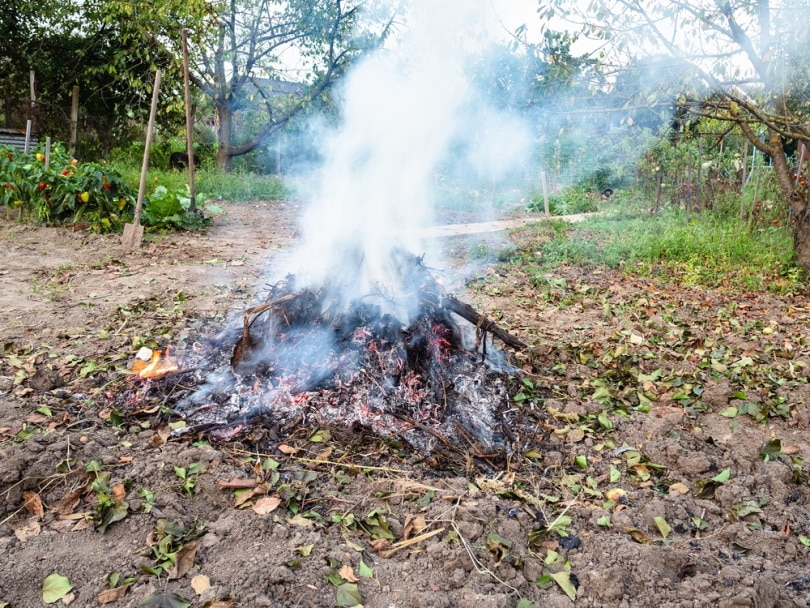
How to Burn Green Wood?
It is not recommended to burn green wood, but if you have to, you will need to dry it out as much as possible. If you have freshly cut green wood, you can stack it close to your wood stove or fireplace to help dry it out faster. It is also a good idea to face the cut ends closest to the fire but be careful not to let them catch.
You can also cut your green wood into tiny pieces and add them to your kindling. When you start your fire, add a little paraffin to get the flame going. Your fire must be as hot as possible to burn through all the moisture. Airflow is essential to raise the temperature, so make sure your pieces of greenwood are chopped up very small and have spaces between them.
Green wood should only be burned outdoors away from neighbors, animals, and other properties because of the volume of thick smoke it creates. Don’t stand in the direction of the smoke, and if you have a mask, it’s a good idea to wear it while burning green wood.
How to Season Green Wood
Once your green wood has been chopped into smaller pieces, you can leave it to air dry. Air Drying does take some time; it can take up to a year to complete.
Kiln drying is another option. The warm air currents of the kiln will dry the green wood without exposing it to fire and is much faster than air drying. It is a method usually used by builders and woodworkers, but if you have this option available, kiln-dried wood is 100% effective.
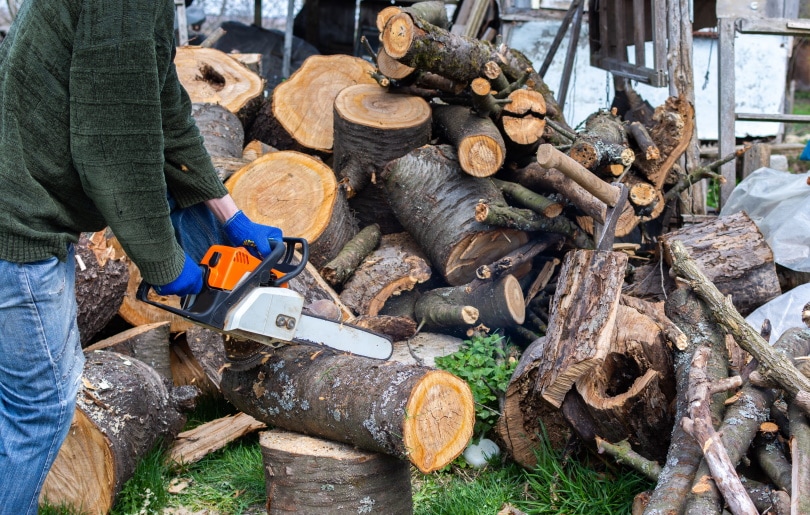
Here are some tips to follow to season green wood faster:
- Stack the wood so that it stands on end to drain the moisture faster.
- Raise the log pile off the ground, so there is circulation underneath.
- Don’t pack the logs too tightly.
- Stack your wood where there is plenty of sunshine.
- Splitting the wood allows moisture to escape and allows sunlight and wind to reach the sides. Smaller wood piles will dry faster.
- Cover your log pile with a tarp or plastic sheet to keep it dry.
How to Safely Dispose of Green Wood
Wood isn’t considered a hazardous material, so it can typically be thrown away with your trash. Obviously, this is for smaller pieces of wood, but you can take larger pieces to a disposal facility. City waste collection services have a limit on what they will accept. Typically, the wood must be 12–4 inches thick. You can also allow the wood to decompose in your garden slowly and rot into compost. This will take a long time and depends entirely on you and the aesthetic of your garden.
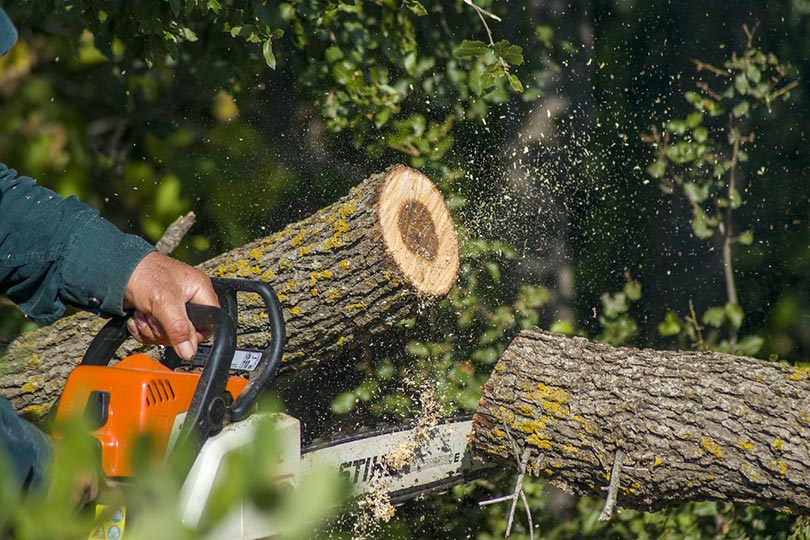
Other than throwing your green wood in a landfill, there are other ways you can dispose of it or, better yet, recycle it.
- Depending on the species and quality of the wood, consider having your tree milled into lumber. There are also many woodworkers and furniture makers who would happily take the tree for wood.
- Use the wood to create a habitat for wildlife. If you live close to forest land, you can leave a pile of brushwood or a log for wildlife. The pile can be used by a variety of organisms for food and shelter.
- Include the wood in your landscaping. Larger branches can be used to border pathways or use smaller branches to create small fences for garden beds.
Final Thoughts
While most materials can be burned, green wood should not be burned, and it does not make good firewood. While one fire with green wood will not burn down your house, understanding how much of a difference it makes versus using seasoned wood will make you wary of using green wood at all. If you need to burn green wood, it should be dried out as much as possible, and if you decide not to use it for firewood, you can safely dispose of it, compost it, or recycle it in creative ways.
Featured Image Credit: Andrew Angelov, Shutterstock
Contents


